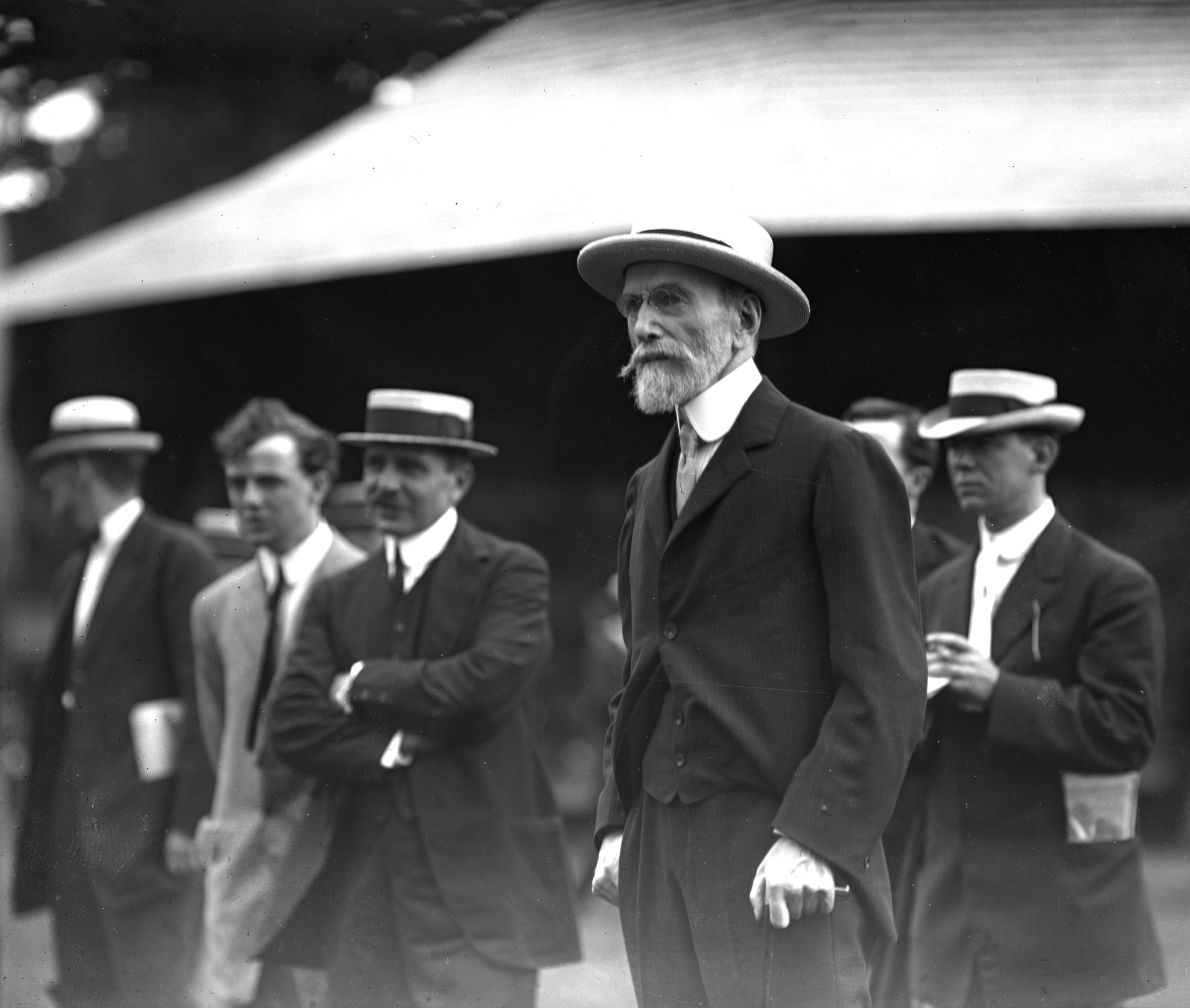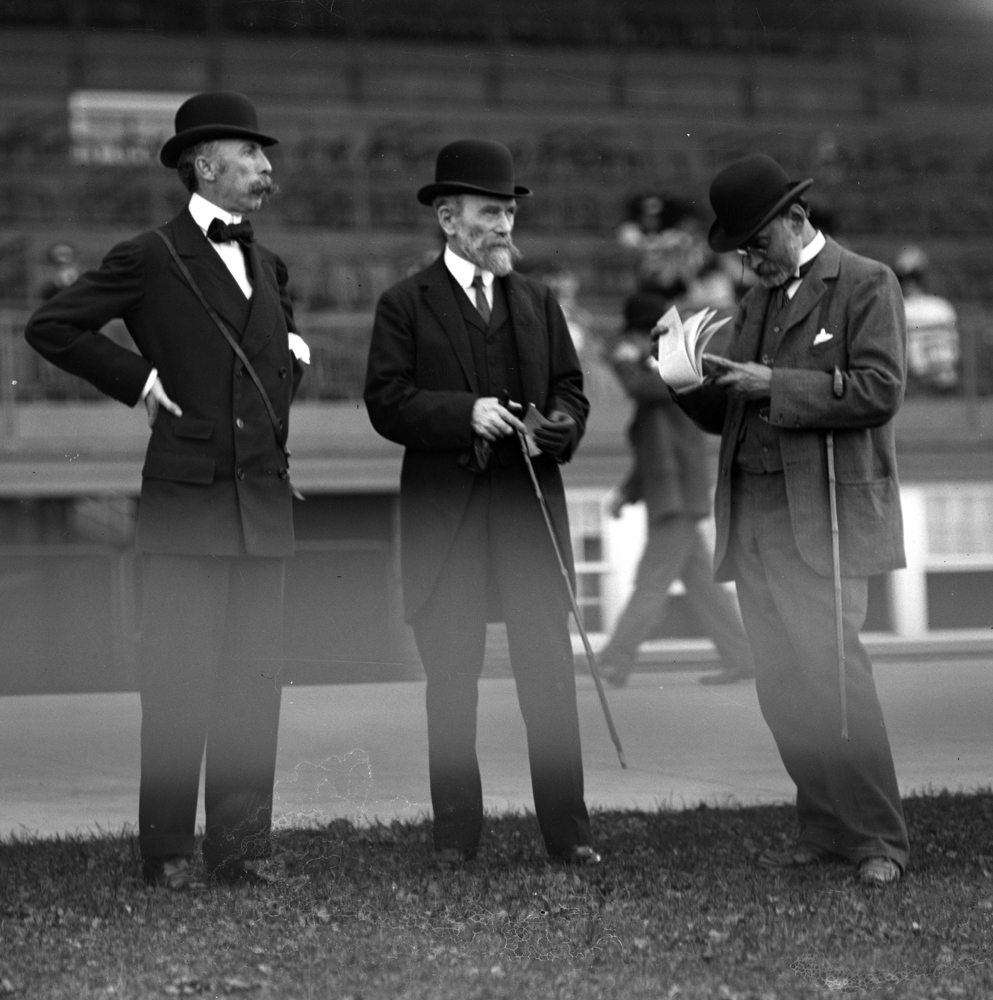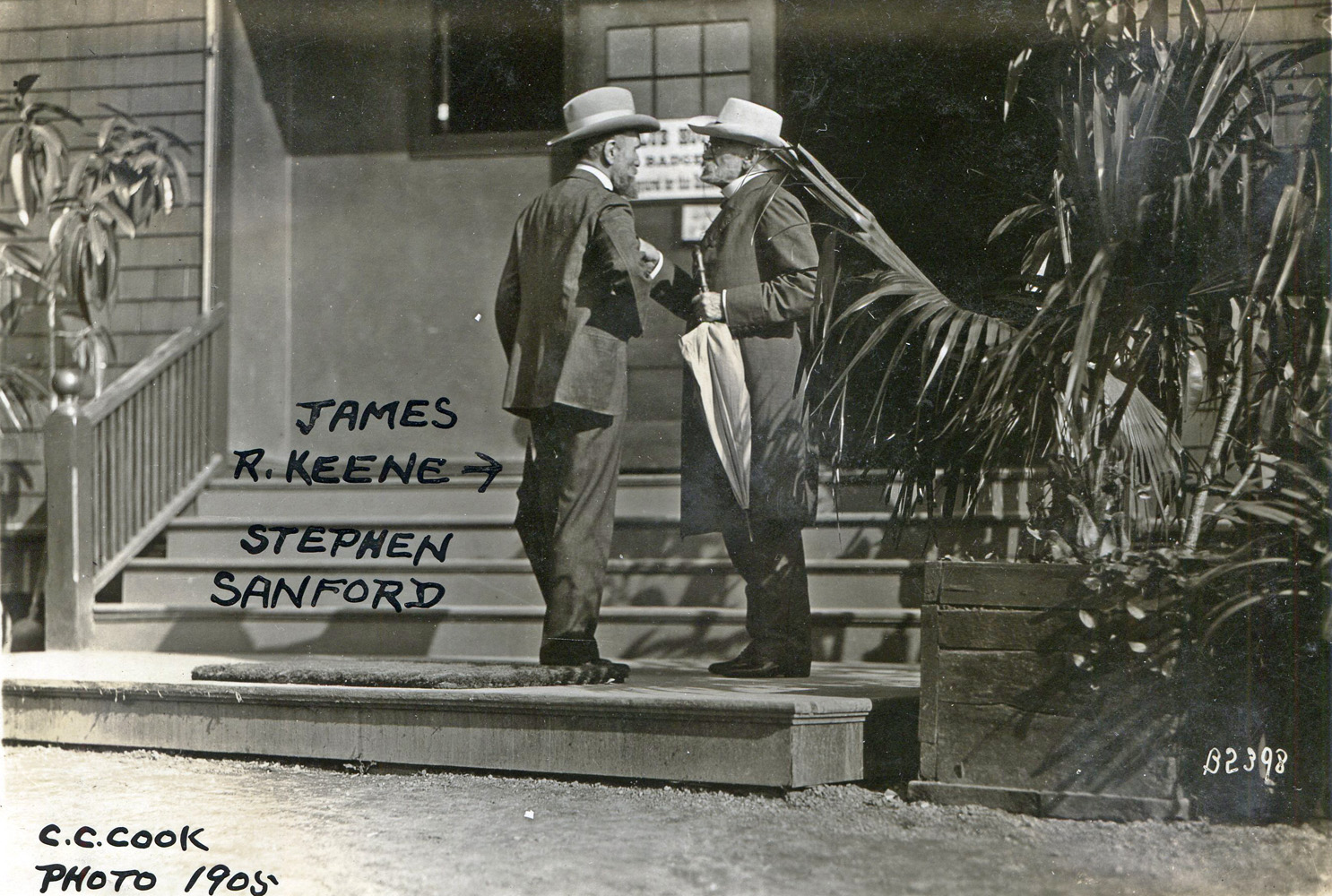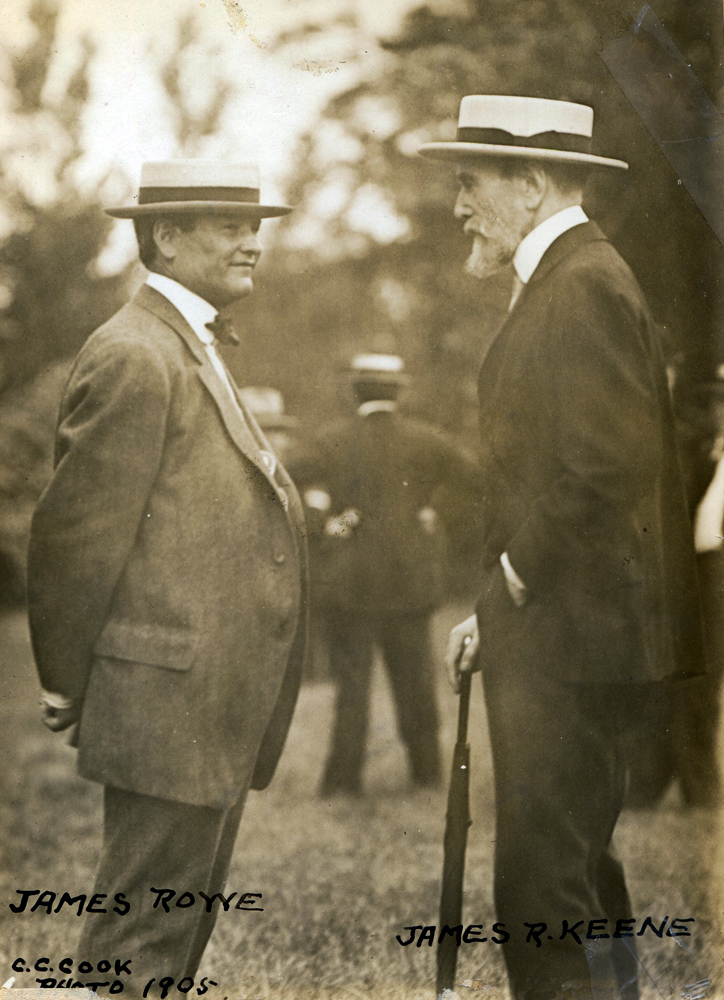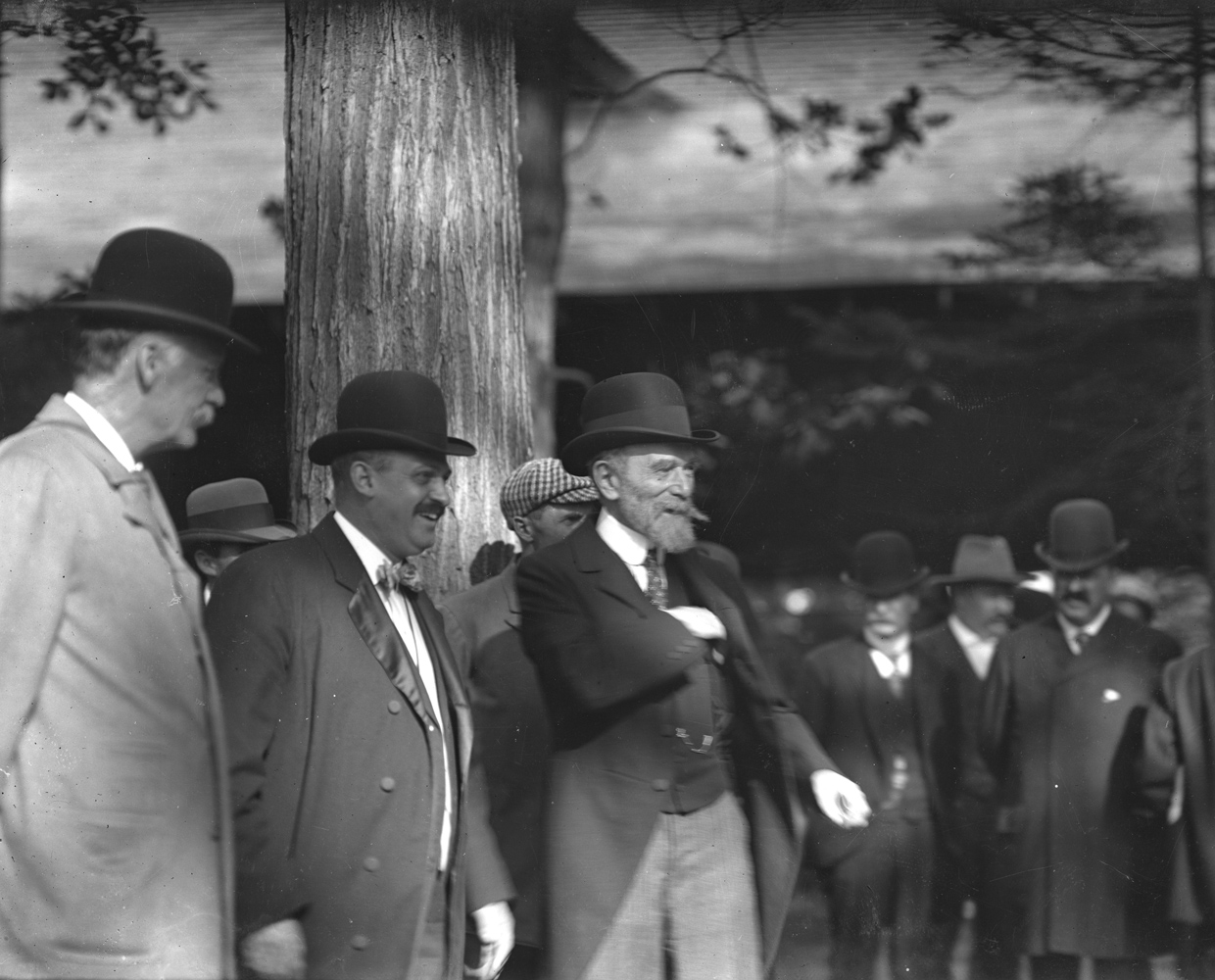James R. Keene
Born in England in 1838, James R. Keene was the son of a merchant, educated in Lincolnshire, and then Ireland, before his family moved to America in 1852. The Keene family initially settled in Virginia but then journeyed west to California. As he grew into adulthood, Keene tried his hand at a variety of professional endeavors, attempting mill work, raising livestock, selling milk, and publishing a small country newspaper. He eventually was drawn to the potential of riches in the mining industry.

2019
Feb. 8, 1838, London, England
Jan. 3, 1913, New York City, New York
Biography
Born in England in 1838, James R. Keene was the son of a merchant, educated in Lincolnshire, and then Ireland, before his family moved to America in 1852. The Keene family initially settled in Virginia but then journeyed west to California. As he grew into adulthood, Keene tried his hand at a variety of professional endeavors, attempting mill work, raising livestock, selling milk, and publishing a small country newspaper. He eventually was drawn to the potential of riches in the mining industry.
Keene moved to Nevada and bought some mules to begin hauling supplies for the Bonanza Mines. He quickly made a small fortune and headed back to California, settling in San Francisco. Keene experienced several peaks and valleys in his finances before a steady period of prosperity during which he was elected president of the San Francisco Stock Exchange. Keene then went to New York City and made several bold plays on Wall Street. One of his first successes was purchasing 10,000 shares of Grand Central railroad stock and flipping the shares for a $200,000 profit. Keene was later described by writer Edward Moorhouse as “probably the greatest Stock Exchange strategist that the world had seen yet.”
The racing bug bit Keene in 1878 when he purchased the 2-year-old colt Spendthrift. Registering his colors of white silks with blue polka dots, Keene was in business as a thoroughbred owner. As a sophomore in 1879, Spendthrift gave Keene his first great racing accomplishments, winning the Belmont Stakes, Jersey Derby, Champion Stakes, and Lorillard Stakes. As a stallion, Spendthrift begot the cantankerous Hastings, sire of Fair Play and grandsire of Man o’ War. Keene purchased 14 mares in England and sent them to Kentucky to advance Spendthrift as a stallion. One of the resulting foals was Kingston, winner of a record 89 races and later a top sire.
In 1881, Keene scored his first major international victory when his colt Foxhall — named after Keene’s son — won the Grand Prix de Paris, then the most prestigious 3-year-old race in France. Foxhall went on to success in England, winning the Cesarwitch and Cambridgeshire double that autumn and the Ascot Gold Cup the following year.
Keene then went into a tailspin on Wall Street. In an effort to corner the Chicago grain market, he lost his entire fortune and was reported to be $1.5 million in debt. His financial troubles also forced him out of the racing game. Keene, however, slowly worked his way back to prominence. J. P. Morgan sought Keene out to manage the stock pools of United States Steel while William Rockefeller of Standard Oil offered similar opportunities. Keene eventually established another fortune and began buying horses again in 1891.
“I have seen him in the dead of winter struggling through the snow drifts, with his head lowered and his body bent, walking against the wind, a dismal figure on the chill landscape,” wrote Moorhouse. “How many men have survived the sudden descent from millions to pennies? Keene did. He bent his head when the storm raged and pushed onward, and twenty years later, he was the admired and envied and feared king of Wall Street.”
Keene purchased the great Domino as a yearling in 1892 for $2,500. The following year, Domino, under the conditioning of William Lakeland, won all nine of his juvenile races and set both the single-year and lifetime earnings record of $170,790. Domino was retired after his 3-year-old season with 19 wins from 25 starts and sent to Keene’s new farm, Castleton Stud, near Lexington, Kentucky. With Castleton producing one quality racehorse after another, Keene ranked among the most powerful men in racing. From 1899 through 1910, Keene raced the following retrospective champions: Chacornac, Voter, Dehli, Sysonby, Court Dress, Colin, Peter Pan, Maskette, Ballot, and Sweep. Including the purchased Spendthrift and Domino, Keene campaigned a total of 13 champions. Keene was the leading owner in America each year from 1905 through 1908. His stable’s earnings of $397,342 in 1907 stood as the record until surpassed by Harry Sinclair’s Rancocas Stable in 1923.
Among Keene’s many great racehorses, Colin and Sysonby are regarded as two of the best the sport has ever seen. Colin won all 15 of his career starts, including the 1908 Belmont Stakes, giving Keene the fifth of his six Belmont winners. Along with Spendthrift and Colin, Keene won the Belmont with Commando (1901), Delhi (1904), Peter Pan (1907), and Sweep (1910). Sysonby, meanwhile, lost only once in 15 starts and was regarded as the top juvenile of 1904 and the best sophomore of 1905.
When anti-gambling forces shut down New York racing in 1911, Keene sold Castleton Stud for $250,000 to New Yorker David Look, who later converted it into a standardbred operation. Less than two years later, Keene died at the age of 74.
Keene’s enjoyment of the sport of thoroughbred racing was perhaps best chronicled in an interview he gave to the New York Herald in 1908.
“It is the gratification of possessing something that you know is a little better than that possessed by anybody else,” he said. “Beyond that, it is a matter of intense personal pride. It is not the sum the horse may earn; it is not the possibility that he may be employed for speculation that makes him desirable, because racing for gaming is not sport. It is the fact that he is a wonderful work of nature, a fine, high-spirited, perhaps gentile and intelligent, animal that is a little superior to all others of his time, and whose courage is tested by races he runs and the results that follow.”
Achievements
North America's leading owner in earnings — 1905, 1906, 1907, 1908
Bred 113 stakes winners, including 13 champions
Triple Crown Highlights
Won the 1894 Preakness Srakes — Assignee
Won the 1879 Belmont Stakes — Spendthrift
Won the 1901 Belmont Stakes — Commando
Won the 1904 Belmont Stakes — Delhi
Won the 1907 Belmont Stakes — Peter Pan
Won the 1908 Belmont Stakes — Colin
Won the 1910 Belmont Stakes — Sweep
Media
